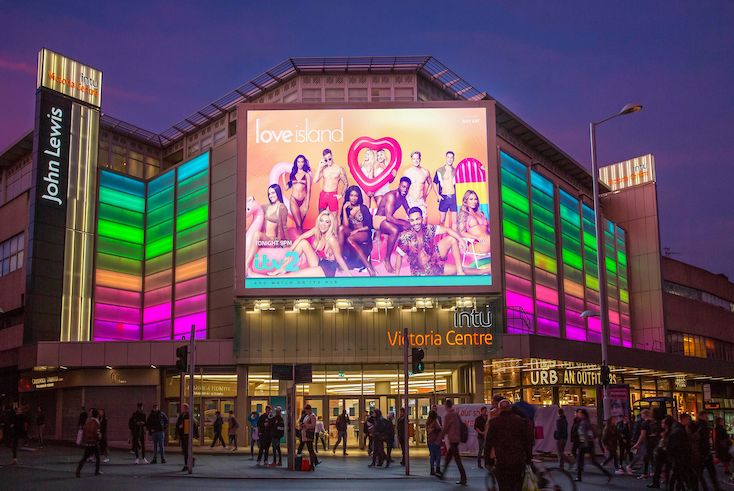Rapid and accurate audience measurement is the gold standard of accountability for any medium or media owner – but how possible is it?
One of the reasons for the seemingly irresistible surge of digital is the rapidity of its measurement, essentially in real time.
One might quibble about its accuracy in certain contexts -–Google and Facebook marking their own homework via the data in their so-called “walled gardens” – but it’s certainly quick and that’s a huge advantage.
Out-of-home (OOH) may be bouncing back strongly from the pandemic – it’s set to overtake print as the biggest ad medium after digital and TV – but its precipitous fall as Covid-19 struck has left scars too.
And with urban behaviour changing in terms of frequency, locations, time of travel and new journey forms, better audience measurement is surely needed to increase the relevance and competitiveness of OOH in our multi comms channel world.
Existing OOH measurement varies by company and by country. Some countries have worked hard and spent heavily to create their own systems – Route in the UK, Geopath in the USA, MOVE in Australia, for example – while others have virtually none.
Historically, there are lots of reasons for this, whether it’s the expense, the time it takes to get agreement, or just the sheer difficulty of gaining an accurate snapshot of the medium in vast countries where paper and paste is still by far the dominant variant.
But a snapshot of past behaviour is not enough, we need to work towards a system which is comparable to other media (omnichannel marketing being one of today’s buzz issues), accurate and quick.
Time for reinvention
Disruption has been a communication planning strategy in recent years, with ads challenging the status quo and breaking through all the noise. But the global pandemic has been the biggest disrupter of OOH audience measurement.
Lockdowns created a break in travel patterns within countries and between countries. While the roads are again filled with vehicles, trains, buses, and planes still operate, is it exactly the same as we measured the OOH audience pre pandemic?
For the planning agencies, post-pandemic is an opportunity to reinvent their approach to campaign planning and channel choice.
Meanwhile, advertisers expect and demand fewer metrics that are more encompassing and more robust.
In essence for OOH, we need to be looking at the present and future rather than relying on past behaviour.
We need to build far more flexibility in data gathering and reporting.
Mobile tech is creating ripples
Various studies are taking place in search of this holy grail and key to all of them is the ubiquitous mobile.
With most of the world constantly scanning mobile screens, we know where the people are and their actual journeys giving their potential exposure to OOH inventory static and digital.
There are layers of research to apply to the mobile data to get to an eyes-on impact, but this fundamental bedrock of travel data is available in all markets, providing the opportunity for consistency in how OOH is measured.
In China, technology drives the relevance and integration of OOH media communication with the digital channels enhancing the consumer experience. We see this with the latest 3D screens that require no special eyewear to see the advertising, and the spectacular and new nature of the experience means it is snapped, filmed and shared across social media.
This is exciting and the success of the OOH event or technology can be measured by this ripple across Twitter, Instagram, Facebook etc.
OOH is worth more than a blunt value on a media plan
This is only the tip of an OOH advertising campaign. The brand message will be on the side of a bus, a screen in a shopping mall, a small poster in a supermarket carpark, a large billboard on the highway, a screen in a railway station and many more environments that form the daily opportunities for a brand to connect with consumers.
It is understanding what these deliver individually and collectively through audience measurement that improves the odds for OOH media being considered and selected to deliver the campaign objectives.
If the OOH industry wants control of how its audience is measured it has to mobilise and invest in measurement technology.
If it does not, it will be assigned a blunt value in channel planning that will not necessarily reflect its true contribution.
And then, just at the time when the medium should be in recovery, it will be very difficult for OOH to re-engage and change how OOH is assessed.
David Gordon is a partner at OOH Capital, a global out-of-home advisory and consultancy that launched earlier this year. He was formerly global insight director at Posterscope.
Adwanted UK is the trusted delivery partner for three essential services which deliver accountability, standardisation, and audience data for the out-of-home industry.
Playout is Outsmart’s new system to centralise and standardise playout reporting data across all outdoor media owners in the UK.
SPACE is the industry’s comprehensive inventory database delivered through a collaboration between IPAO and Outsmart.
The RouteAPI is a SaaS solution which delivers the ooh industry’s audience data quickly and simply into clients’ systems.
Contact us for more information on SPACE, J-ET, Audiotrack or our data engines.





